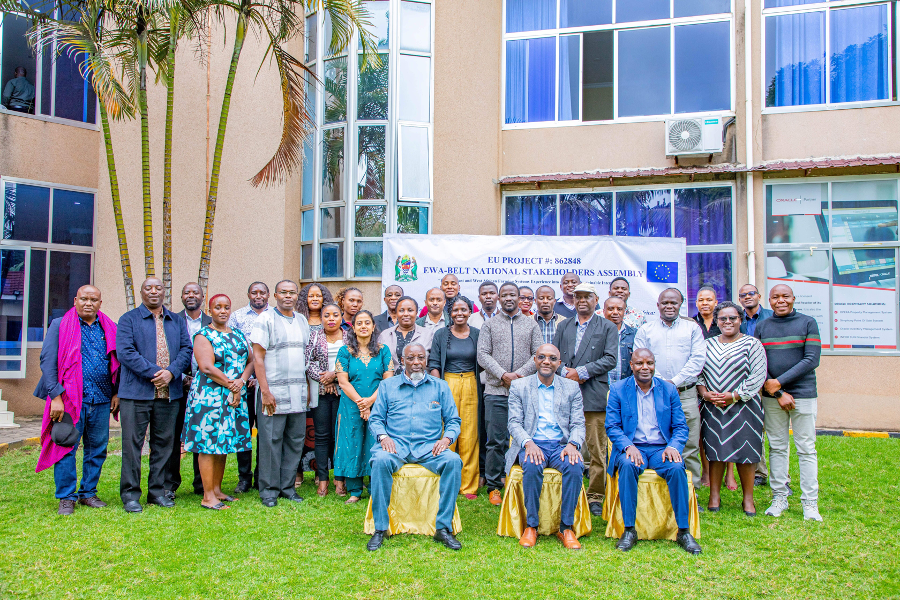FusaHelp for preliminary morphological identification of Fusarium species
- OCCAM - Observatory on Digital Communication

- Apr 28, 2023
- 3 min read
Updated: May 10, 2024

We are proud to share that our colleagues from the University of Sassari (Virgilio Balmas, Safa Oufensou, Quirico Migheli) in collaboration with CREA (Alessandro Infantino, Alessandro Grottoli, Valentino Bergamaschi) and Sidney University (Lester W. Burgess), have released FusaHelp, a website program that helps facilitate the correct preliminary morphological identification of Fusarium species. Being “one of the important phytopathogenic fungi of agricultural and human concern” (Infantino, A., Grottoli, A., Bergamaschi, V. et al., 2023), Fusarium identification and diagnosis are of the utmost importance and a “prerequisite for many scientific fields, such as agriculture, ecology and medicine” (ibid).
The FusaHelp program identifies the most widespread species by an open access, web-assisted interactive site. It is generated with the help of LucidBuilder, a JavaScript-based platform. Upon a thorough analysis of the available literature, along with the morphological description used in the synoptic keys, the researchers were able to identify the most widely accepted variations of Fusarium species. If there were discordances among authors, or missing descriptions, the experts performed direct observations at the microscope of cultures of the species (proceeding from International Culture Collections and confirmed by molecular analyses with tef-1α sequence). Should new species appear or be suggested by the Fusarium community, the website is easily upgradable and can be edited as needed.
FusaHelp is an important resource with broad application possibilities in the laboratories that cannot afford or do not have the means to carry out expensive biomolecular analysis to primarily identify such pathogens. On top of being a useful diagnostic tool, FusaHelp also represents a promising didactic aid for the training of researchers and technicians in the field of mycology to be employed alongside the microscopic observation of in vitro cultures. How? The users first prepare the microscopy slides, observe the morphological structures of the fungi and then compare them with the information within the database. The use of specific agar media is advised. Doing so will permit them to gradually learn to recognise the fungus at the species level, eventually becoming autonomous. Capacity building activities of this sort are fundamental in such contexts and differentiate this approach from other diagnostic databases that generate a response without the direct involvement of the applicant.
Such features thus make FusaHelp a very useful and easy-to-use tool for students, researchers, agricultural technicians, medical and veterinary doctors and all those interested in taxonomic studies based on the morphology of this important fungal genus.
The database FusaHelp is freely available at the following link: https://www.fusahelp.com.
Within the EWA-BELT context, the FusaHelp database could prove useful when, and if, the PLANTHEAD Platform shall integrate an Artificial Intelligence tool capable of evaluating microscopic images obtained by the Foldscope paper microscopes (or by any other microscope). When doing so, having available numerous pictures to recognise a specific form of plant disease through the FusaHelp bank could represent a time and cost-efficient strategy to address morphological issues. As such, a sharing of knowledge and competences between the two digital tools could represent a new and encouraging frontier in the digitalisation of diagnostic tools for plant protection.
More information is available in the article by Infantino A., Grottoli, A., Bergamaschi, V. Oufensou S., Burgess L.W, Balmas V., “FusaHelp: a web site program for the morphological identification of Fusarium species” published in the Journal of Plant Pathology (JPP) (2023). (https://doi.org/10.1007/s42161-023-01349-6) and having received the “JPP's editorial choice” for May 2023.





Comments